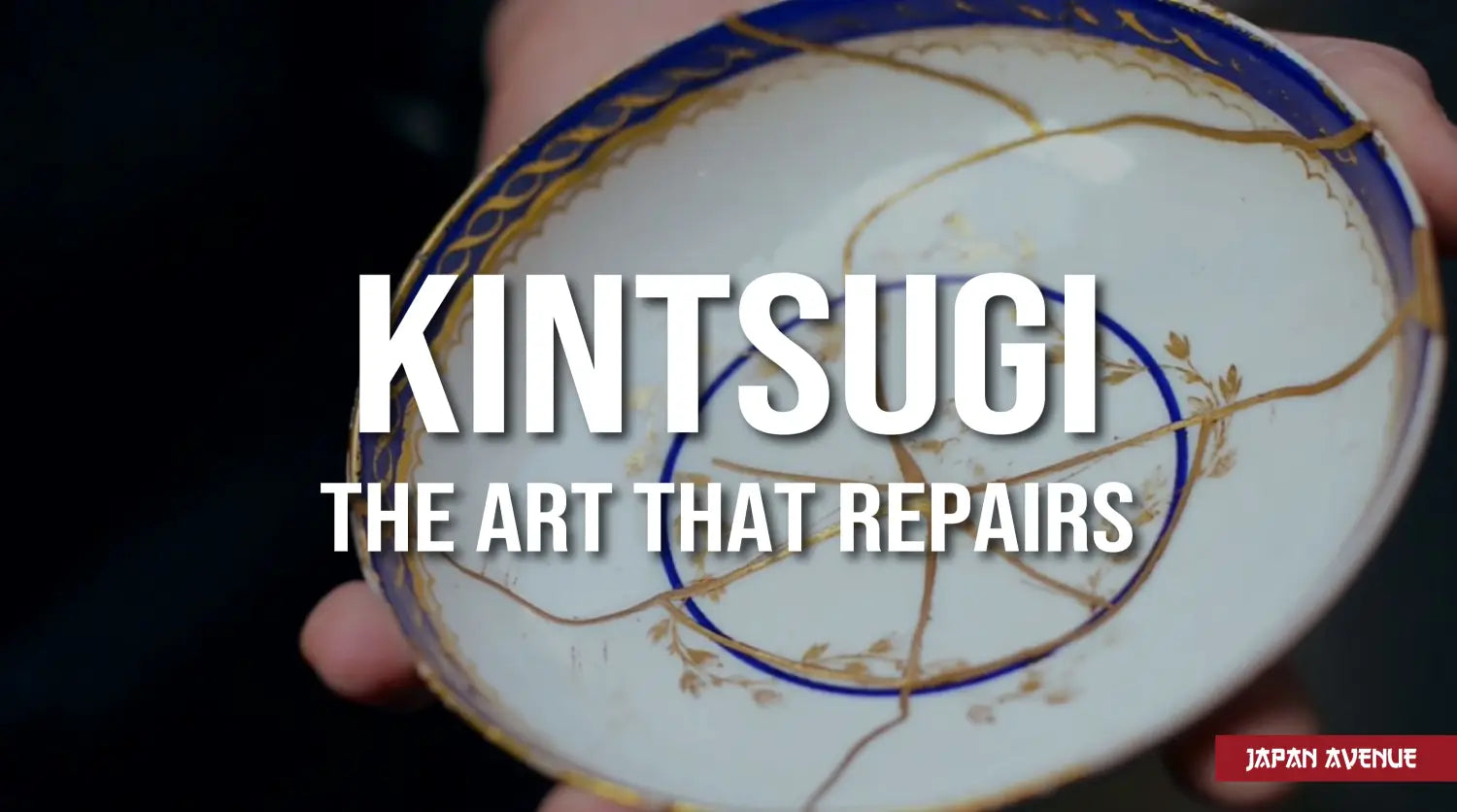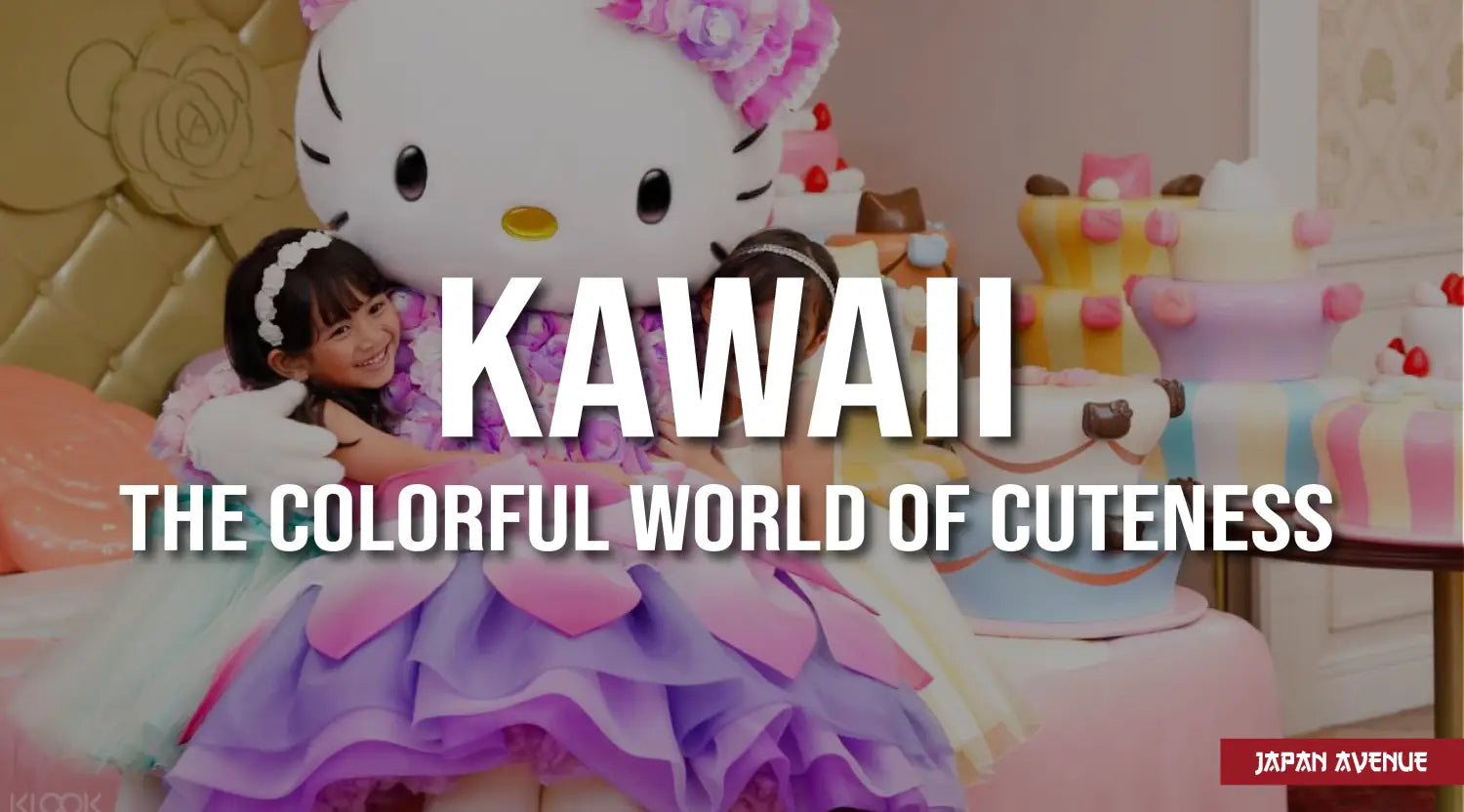Both decorative and spiritual, the age-old art of Kintsugi (金継ぎ) repairs objects (and spirits) while sublimating them with gold powder. This technique aims to highlight cracks by making them aesthetically pleasing, instead of masking them.
As a symbol of renewal, Kintsugi originates from Wabi-Sabi, a philosophy that embraces beauty in simplicity and imperfections. This concept is applied to many Japanese arts. More than just a craft practice, Kintsugi is a true metaphor for resilience that can be applied to oneself. This traditional process of restoration takes time, like for a wound to heal.
Discover, step by step, the history and magic of Kintsugi as well as its parallel with Zen Buddhist philosophy. 🧘
Kintsugi, somewhere between art and spirituality
Kintsugi appeared in the archipelago in the 16th century and consists of the art of repairing ceramics, porcelain and earthenware by embellishing them. "Kin" means "gold" and "tsugi" means " join " in Japanese. No question of throwing away a broken pottery and even less of hiding the cracks of its old crockery. Instead, the Kintsugi philosophy emphasizes the value of the object by highlighting its imperfections, in accordance with the principle of Wabi-Sabi.
This Zen Buddhism way of thinking, which is free from perfection, finds beauty in the passing of time and the trials of life. According to this philosophy, the cycle of life is a remarkable work that begins at birth and ends at death. Thus, small flaws and natural wear and tear are what reveal the splendor of things.
Kintsugi craftsmanship is based on this theory to repair broken pottery. This process uses lacquer (urushi in Japanese) to glue the pieces back together and cover the cracks in gold to accentuate their shine. Cups, bowls, statues, sculptures and valuable ceramic pieces are reassembled, dried and polished. Lastly, the scars are painted with gold, silver or bronze powder in order to create patterns. After this decorative repair, the objects are even more solid than before. Some people would even have fun dropping them on purpose to test their strength.
The steps of the Kintsugi repair process
Kintsugi is a traditional art which requires a lot of time, rigor and precision in gestures. In general, one piece of work requires one month of effort on average, however the most beautiful creations can take more than a year to be completed.
At that time, craftsmen routinely went to sea in order to escape from dust and improve their working environment. Did you know that urushi is actually a very toxic and allergenic substance? Thus, the day an apprentice had a contact reaction with excruciating itching, his master would say that he had officially become a true urushi craftsman.
All the steps of Kintsugi can be applied to oneself in order to heal psychological or physical wounds in a process of personal development.
Have you just experienced an emotional shock? Is your heart broken? Heal your wounds and rebuild yourself by following the example of this Japanese restoration technique in the following 5 steps!
1. Put the broken pieces back together
After thoroughly cleaning and gathering the pieces, let's mix the lacquer (urushi) with clay powder to obtain a kind of putty that we will gently apply on the broken pieces to glue them back together.
➡ This is the moment to heal your physical or emotional wounds and gather your strengths.

2. Allow time to work
Objects need to dry for several weeks as the resin hardens. Following this stage, some touch-ups can be made with the filler and then again needs time to dry.
➡ This drying phase corresponds to the healing process. Take as much time as you need for your reconstruction.

3. Starting over on a good basis
Next, we will polish the ceramics to remove any roughness and irregularities on the surface before applying a thin layer of lacquer on the cracks with a brush. You'll need to wait another 1-2 weeks to allow it to dry.
➡ Have you moved on from your past? It's time to refocus on the present and make a fresh start. This phase is one of rebirth.

4. Reveal the beauty of the cracks
Cracks are coated with lacquer and iron oxide and then covered with gold powder in order to create decorative patterns. Lastly, once everything is dry, a final coat of urushi will be applied to fix the decorations.
➡ Embrace your personal history and scars. You will rise up even stronger and more fulfilled than before.

5. Cultivate the art of imperfection
Gold lacquered designs are polished to reveal their brilliance. Some craftsmen use agates or fish teeth as polishers. However, a few flaws are intentionally left to add relief.
➡ Learn to appreciate small imperfections and banish the quest for smooth, bland perfection.

The history of Kintsugi
After breaking his favorite bowl, the shogun Ashikaga Yoshimasa decided to send it back to China to be repaired. Note that the ceramic services were particularly appreciated in Japan for the tea ceremonies. 🍵 However, the Japanese did not master the techniques of manufacturing or repairing such ceramics unlike their Chinese or Korean neighbors.
But when the object came back pitifully repaired, the shogun became very angry. So he asked his craftsmen to find a more aesthetic way to restore his favorite bowl. It is thus a whim that was at the origin of Kintsugi with the will to give a second life to objects while respecting their history. Note that this traditional technique is completely in line with the basics of recycling and ecology of today. ♻️

When Japanese craftsmen finally mastered the method of repairing ceramic with a natural lacquer called urushi, they were inspired by the concepts of Zen philosophy that made the restoration of broken pottery a noble art.
Everyday objects were given a new lease of life and were adorned with beautiful golden motifs and turned into unique pieces. Old vases, damaged trinkets and patinated art objects were recycled to the great pleasure of collectors. So much so that some people would break their dishes on purpose to give new life to their teapots or china plates. If you ever wish to try this art of repair yourself, know that there are many tutorials and DIY available on the Internet.
Kintsugi philosophy - the art of repairing
As a true example of wabi-sabi, Kintsugi is based on the principle that beauty is found in imperfect and ephemeral nature.
This art fully embodies the symbol of rebirth, for although everything has an end, everything will be reborn more beautifully. By borrowing the philosophy of Kintsugi, something that is considered ugly at first, turns into a testimony of one's history and journey. The scars and marks of time are a source of sublimation and an opportunity to give meaning to one's life.

(Source : esprit-kintsugi.com)
❓ Did you know that samurai proudly displayed their battle wounds even when they were disfigured?
Furthermore, urushi is a living resin that hardens over time and provides incredible strength. Thus, objects restored by this traditional technique are even stronger and more beautiful than before. A valuable life lesson in making your wounds a strength. 💪
More than a simple ceramic repair, Kintsugi is full of meaning. It plays a liberating role as in reality, through the object being repaired, it is oneself that is being healed as well.



